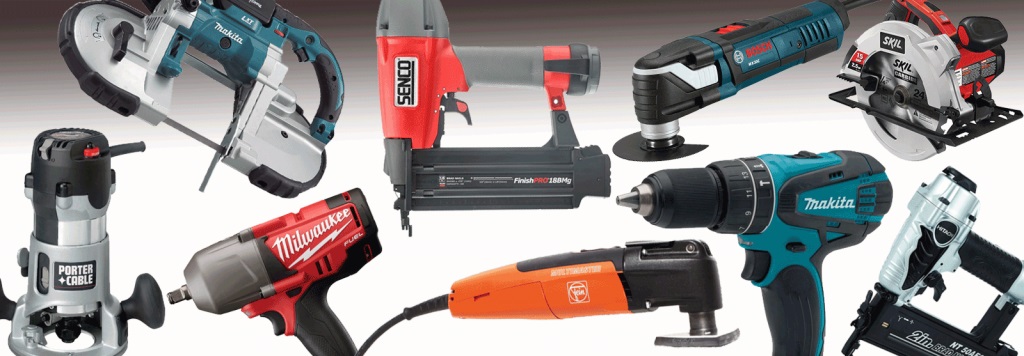Are you thinking of remodeling your home or redesign your garden? While you may always have professionals do it for you, perhaps you can do some of the jobs by yourself. This will both save you money and teach you a new skill. You will, however, need some tools to do so! Learn about the best power tools which you will find handy not only during the remodeling of your home but also for smaller jobs around the house or farm:
Chainsaw
A chainsaw is a mechanical machine with different types of drive. The most common drive is an internal combustion engine, then electric, pneumatic or hydraulic one. It is used for the felling of trees, shortening and working of wood to both masonry and stone (special chain). Professionally, the chainsaw is used in a number of industries, such as in forestry, timber industry, garden and orchard maintenance, fire protection and construction. Today it is widely used in sculpture.
While professional saws for lumberjacks are gentle combustion engines, saws for small home use, work with an electric motor and are powered by electricity or accumulator. Pneumatic or hydraulic saws are used mainly in mines when working underwater. Professional saws have an engine capacity of 50 to about 130 cm³, mid-range saws (also known as farmer saws) have engines with a capacity of up to 60 cm³.
Chainsaws come with different lengths of the chain bar which can be chosen according to the skill of the worker, you have work and engine power. For normal operation with strips up to 40 cm long, working with available strips is already tiring and unproductive for non-professionals.
Drill
Another great, indispensable power tool to use in your home is a drill. A drill is an instrument made for drilling holes with drill bits. Countersinks and reamers are used to obtain more accurate holes. The drill chucks are most often clamped using drills of various types and sizes, the most common being a drill chuck of up to 13 mm diameter. Both manual and electric drills are available on the market. Getting a small rotary tool is also something you should have in your arsenal as well.

Pneumatic hammer
A pneumatic hammer is very likely to be your largest power tool. Popularly known as a jackhammer, this is one of the mechanical machine hammers. It is actually a hand tool designed for drilling holes in concrete, reinforced concrete or stone. Read more about pneumatic hammers: https://en.wikipedia.org/wiki/Jackhammer
It is also used for breaking and mechanical disintegration of solid objects and rigid bodies made of concrete, asphalt, metals, etc. In construction it is used for demolition of masonry or disposal of asphalt carpets (for example, on sidewalks and on roads) and quarries, they are also very well suited for mechanical shaking of castings and stillage in heavy resp. metallurgical industry.
Special types of these hammers are sometimes used in building construction – for example, for strengthening pavement surfaces (damping of clay and sand, etc.). As in the case of small pneumatic hammers, this must be driven by compressed air (or possibly by the pressure of gas from the engine’s own combustion gases) from the machine’s internal combustion engine.
Pressure washer
A pressure washer is a water high-pressure mechanical sprayer. This tool can come very handy for high-pressure cleaning of surfaces and materials as it removes atmospheric impurities such as dust particles and smog, organic impurities like algae, mold, and moss, but also graffiti, grease, cement coating and even chewing gum.
The basic part of this machine is a motor that drives a high-pressure piston pump, a high-pressure hose, and a gun. Water heating is realized by diesel or electric boiler. The optimum variant is mostly given by the environment in which the high-pressure washer is operated.
There is no need to use chemical agents when using the pressure washer although the chemical effect of biodegradable detergents added automatically to the cleaner can be used to deal with problematic dirt (like oils and greases) along with the mechanical power of water. Normally dirt is washed away by a jet of water away from the surface. Read more about how the pressure washer functions.
Sander
The last great tool to have at home is an orbital sander, also known as a slide. It is a hand-held power tool or pneumatic tool for sanding surfaces using sanding paper attached to a flywheel. Orbital sanders are used for pre-grinding and regrinding on various materials such as hard and softwoods and varnishes. The sandpaper is attached to the flywheel by clamps or with Velcro. Dust and dust extraction ensure environmentally and health-friendly work.
In a classical orbital sander, an eccentrically mounted, rectangular flywheel with the clamped sandpaper is brought into a circular movement by the motor. With the rectangular sanding plate, processing in workpiece corners and edges is possible. In contrast to the classic orbital sander, the random orbital sander has a rotating grinding wheel, the mostly round grinding plate of which also oscillates in a circular manner due to the eccentric bearing.
The random orbit sander is guided parallel to the work surface. It can rotate freely or positively. The removal rate is measurably increased under positive guidance since here a gear ensures a constant circular vibration of the grinding wheel. In addition to metal processing, wood, plastics, and glass can also be processed. Eccentric grinders are well suited for fine grinding of surfaces, the circular grooves in the material to be ground, which are common with the classic orbital sander, are largely avoided by the combined rotary and oscillating movements.






